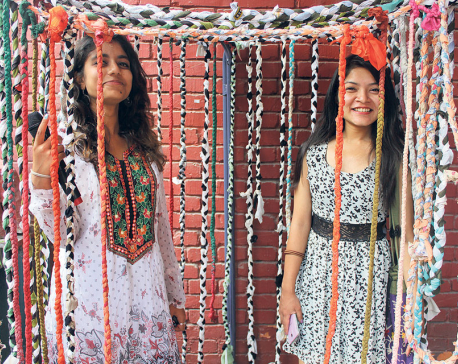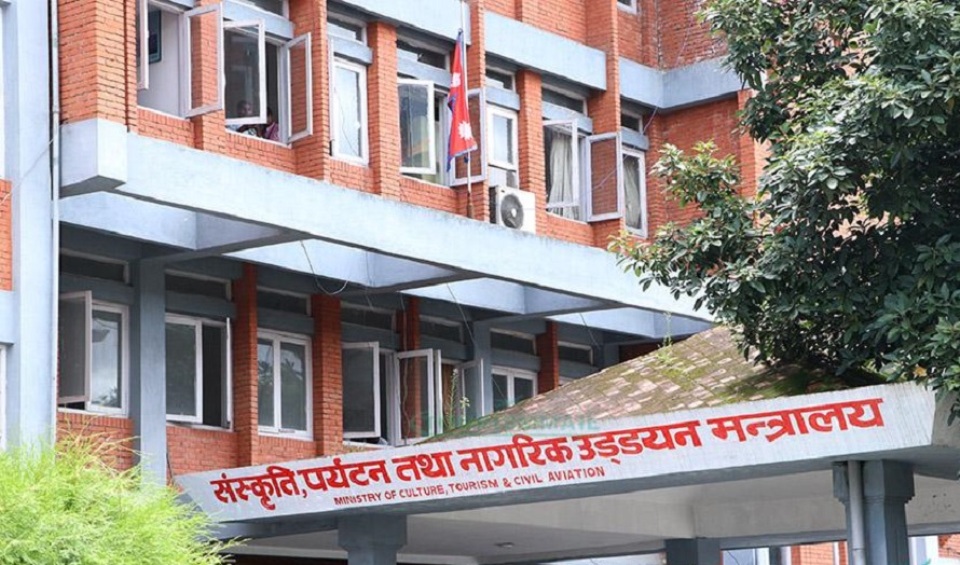
OR
Sickle-cell disease rampant among Tharu community
Published On: January 14, 2017 12:20 AM NPT By: Yogesh Rawal
TIKAPUR, Jan 14: Increasing rate of sickle-cell disease among the members of the Tharu community has become a great health threat for them. This hereditary disease has claimed the lives of several people of the community and has troubled a lot more.
According to various researches, this disease is very common among the indigenous people of Tapka, Jawalpur and Kota of Pahalmanpur VDC of Kailali. A free health checkup conducted by Ghodaghodi Hospital, Sukkhad last August showed that most of the patients suffering from this disease were from these three villages.
As informed by the hospital, 40 out of 65 locals of these villages were found to be infected by the sickle-cell disease. About 2,892 people from Kailali and Kanchanpur had participated in the health checkup. Among the 892 locals who took blood test, 145 of them were found to be infected with the sickle-cell disease.
There is a major settlement of Kathariya Tharus in these three villages. As most of the people living here cannot afford to go to hospitals, Ghodaghodi Hospital conducted the free health checkup to reach out to these people. “In comparison to other areas, we found more number of victims in these places,” said Bishnu Sapkota, chief of the Hospital Management Committee.
The government started its study on this disease since 2012 and later accepted it as a health problem in 2015. Since then, the government has been offering financial help of Rs 100,000 for treatment to each of the identified patients. Seti Zonal Hospital of Dhangadhi and Ghodaghodi Hospital of Sukkhad are entrusted by the government to treat the sickle-cell disease.
More number of people have started coming for checkups after the government recognized the disease as a public health hazard. According to the District Public Health Office (DPHO), Kailali, 203 patients were recommended for treatment for this disease in the last fiscal year. Focal person of the DPHO, Kailash Chaudhary, informed that around 150 patients have been recommended for treatment till the month of December in the current fiscal year. The DPHO provides relief to the patients upon the recommendation of the concerned doctors only after verifying the certificate issued by the doctor and the citizenship of the patient. “These records have shown how serious and uncontrollable this disease this has become in a few years,” Chaudhary said.
According to Chaudhary, this disease was first noticed in Nepal in 2003 by Dr Rajan Pandey. He observed similar symptoms in most of the Tharu patients when he was at Bir Hospital. Later when he was transferred to Bheri Anchal Hospital, where he could closely monitor the patients, he even found out that this disease was more prevalent in malaria-affected areas. At that time, people with this infection were more resistant to malaria but now the infection itself has taken the form of a hazard.
“This disorder, inherited from parents makes it difficult for the blood vessels to deliver oxygen to the cells, causing intense pain and leading to complications leading to organ damage and stroke,” said Grijana Kathariya, a health worker of Pahalwanpur,Tikapur.
You May Like This

Community school teachers must admit their children in community schools
SYANGJA, April 10: The Chapakot Municipality in Syangja district has decided not to release the salaries of community schools' teachers... Read More...

Art for community, with community
KATHMANDU: Art exhibition, created during Community Art workshop ‘Rebuilding Recaptured’ held at Sindhupalchowk, was organized on Saturday at NexUs Culture... Read More...

We will raise arms if Tharu demands ignored: Tharu lawmaker Chaudhari (with video)
KATHMANDU, Oct 4: Madhesi People’s Rights Forum-Democratic (MPRF-D) lawmaker Yogendra Chaudhari on Tuesday warned of an armed revolt if the... Read More...







Just In
- NUP Chair Shrestha: Resham Chaudhary, convicted in Tikapur murder case, ineligible for party membership
- Dr Ram Kantha Makaju Shrestha: A visionary leader transforming healthcare in Nepal
- Let us present practical projects, not 'wish list': PM Dahal
- President Paudel requests Emir of Qatar to initiate release of Bipin Joshi
- Emir of Qatar and President Paudel hold discussions at Sheetal Niwas
- Devi Khadka: The champion of sexual violence victims
- Nagarik Nayak Felicitation (Live)
- Qatar Emir in Kathmandu, President and Prime Minister welcome Emir at TIA (In Photos)



_20240423174443.jpg)






Leave A Comment